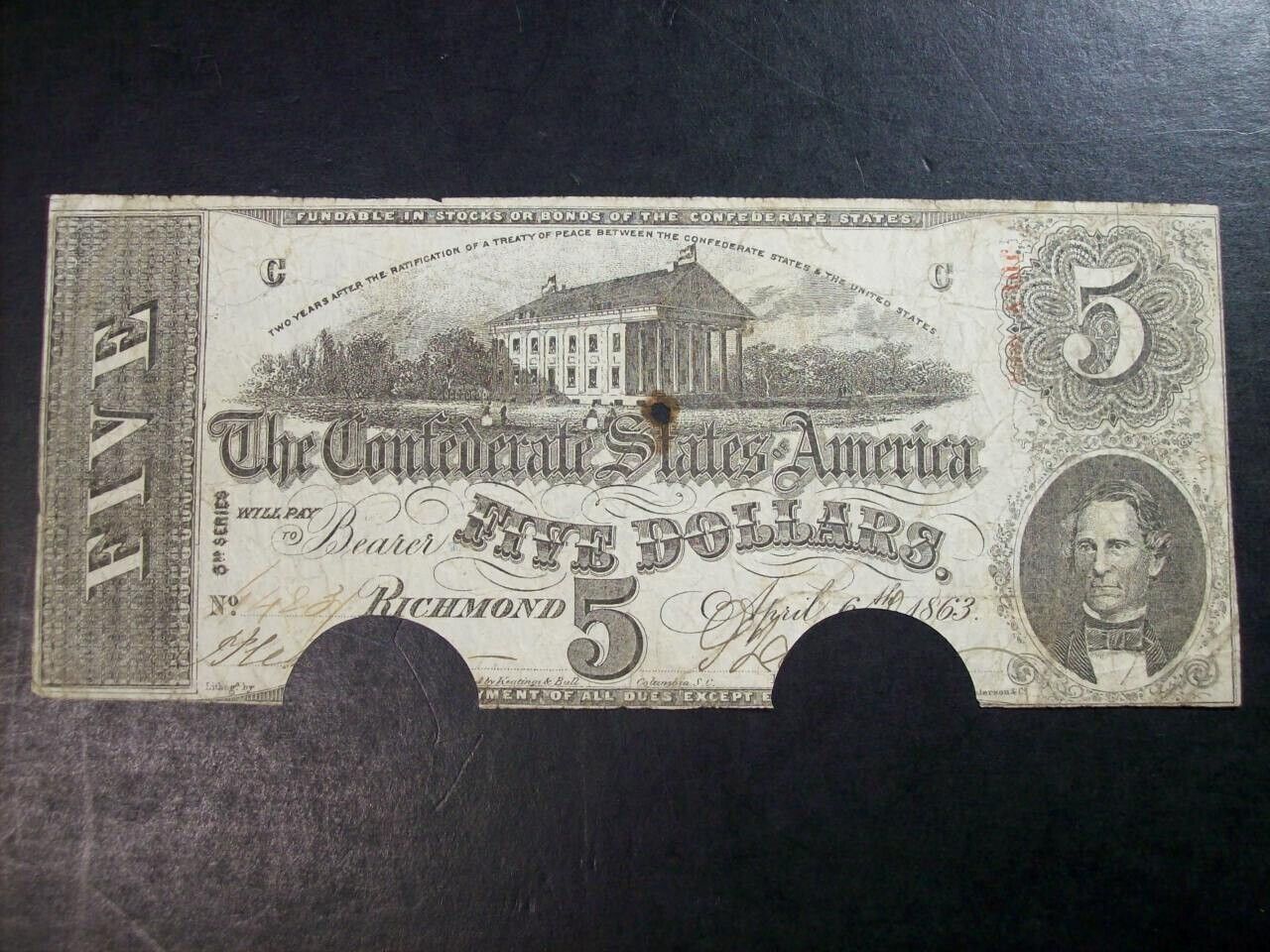-40%
1864 ONE DOLLAR CSA CONFEDERATE STATES OF AMERICA CURRENCY NOTE(B), FACSIMILE
$ 2.64
- Description
- Size Guide
Description
Up for sale is a facsimile of the 1864 DOLLAR Confederate States of America Currency Note.This facsimile bill is in excellent condition.
Please review the pictures and decide on the grade/condition yourself.
What you see is what you will get.
We try to grade our coins and currency fairly and accurately, however we realize that this grading is subjective and we are trying to include large and clear pictures that are clear enough for you to make your own judgement.
Bill comes from a smoke-free and pet-free home.
We want all of our customers to be happy with their purchase, please see our 100% positive customer feedback, we want you to buy with confidence!
We ship most orders next day, however on weekends orders don’t get out until following Monday.
Many of our products are shipped via USPS Registered mail so we can track the delivery to you.
Thank you in advance for your order.
The story of Confederate Currency:
With the secession of South Carolina on December 20, 1860, the Union,”one and inseparable” was a Union no longer. The igniting spark was the question of slavery but the North and South – one industrial, the other agrarian – had been drawing apart in many ways since Colonial times.
Other states in the South, following South Carolina’s lead, seceded early in 1861. Jefferson Davis became President on February 9
th
. At that time the Confederacy consisted of seven states. Following the fall of Fort Sumter on April 14
th
, six more states seceded by the end of the year. On April 15
th
, 1861, President Lincoln declared that “insurrection” existed and called for volunteer troops. The South soon recognized that it could not peacefully part ways with the North. On May 6
th
, the Confederate Congress mae know that a state of war existed between the U.S. and Confederate States. It was to last four bloody years.
The paper currency, the money of the Confederate was just one important part of the struggle – which played an important part in buying material of war. Having but little coin in spite of foreign loans, seizure of the US Mint at New Orleans and patriotic contributions of the people, the government resorted to paper money.
The leaders of the South well knew the dangers of inflation and did not originally intend unlimited issues of paper money. Further it was backed by cotton. The South in 1860 produced over four million bales of cotton of which three-fourths was exported, over half of which went to England. Planters were asked to contribute a portion of their crop to the government for which bonds were given in return. Or as Vice President Stephens described it, a loan of cotton with the bonds being a profitable investment selling above par if the Confederacy won the war, if not, “they will be worth just as much as anything else you have, and nothing else you have will be worth anything.” An accurate prediction.
Since the South produced most of the world’s supply of cotton at that time there was no question of demand. Keeping the proceeds from the portion of cotton loaned to it by the planters was expected to provide ample money for the government to the tune of about one hundred million dollars a year.
Unfortunately, a flaw developed in their calculations. England had put in a good supply of cotton and the United States blockaded the Confederacy.
The Confederacy had not yet been defeated in Gettysburg and Vicksburg when the sixth issue of notes first appeared but the pressure of the war was making itself felt. With this issue, all notes except the three lower values again carried the clause indicating that payment of the notes would be made “Two years after the ratification of a treaty of peace”.










